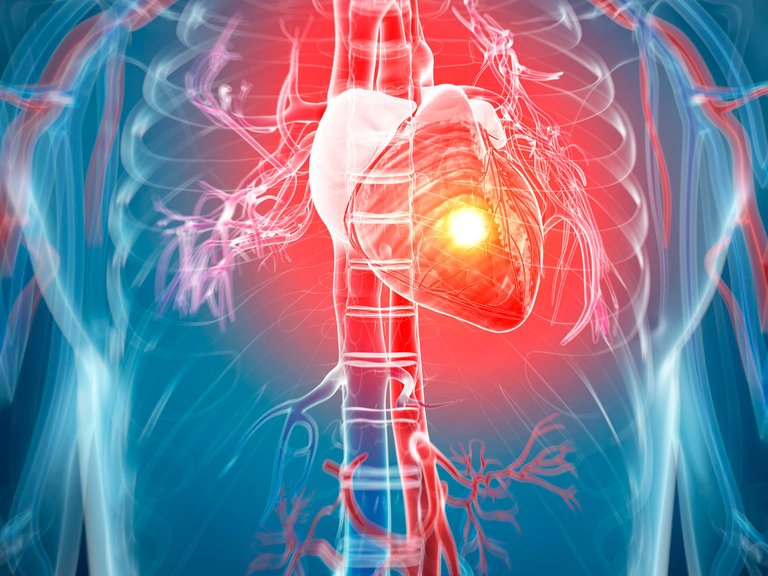A heart attack is caused when your coronary arteries become sufficiently blocked that heart muscles can no longer get an adequate supply of oxygen. When heart cells actually die due to this lack of oxygen, this is known as a myocardial infarction. But this has nothing to do with your arms, right? So why could my left arm (or right for that matter) be in pain when I’m having a heart attack? It is all down to referred pain.

What is referred pain?
Those males out there may notice that, upon receiving a particularly ferocious knock to the testicles, we get a pain in the bottom of our stomach (the suprapubic region, and sometimes inguinal canal). This is a referred pain.

Referred pain occurs when pain that originates in one part of the body is perceived in another part. It usually occurs because the brain is not used to receiving signals of pain directly from organs. This means that if a pain signal does reach the brain from an organ, instead it perceives the pain to be coming from the skin at the same spinal level, thus you feel pain in the skin overlying the area supplied by the same level of nerves as the organ in pain. This is the case with my example involving testicles above.
Another common source of referred pain if from diaphragmatic pain being referred to shoulder tip. The diaphragm is supplied by the phrenic nerve, which has the nerve roots from C3, C4 and C5. These nerve roots also supply the skin overlying the shoulder tip, hence diaphragmatic pain can be misinterpreted by the brain as being from the shoulder. This is frequently caused by inflammation of the gall bladder irritating the diaphragm.
So, why is pain referred to the left arm during a heart attack?
Much like the diaphragm, the sac surrounding the heart, known as the pericardium, is supplied by the phrenic nerve. This nerve has the nerve roots C3, C4 and C5 (as described above). During a heart attack the pericardium can become irritated and the brain will interpret this pain as coming from the skin which is supplied by nerves originating from C3, C4 and C5. This includes the arm, but also encompasses the shoulder, neck and jaw. This is similarly why people experience pain in their shoulder, neck and jaw during a heart attack.
A heart attack can be very serious, so it is extremely important to know the symptoms, and they can be found here.
References:
Image 1
Image 2
http://www.nhs.uk/Conditions/Heart-attack/Pages/symptoms.aspx
http://www.independent.co.uk/life-style/health-and-families/health-news/heart-attack-symptoms-signs-half-of-people-do-not-realise-circulation-study-says-a7033351.html
https://myheartsisters.org/2013/07/10/arm-pain-during-heart-attack/
Very informative post and well written. Keep up the good work!
Followed you and look forward to reading more.
Very informative post. Would like to nominate this for @ocd and see if it makes the compilation:
That would be great, thanks
Upvoted by Emma
Thanks, great informative post.
Explained to the point , nice post.